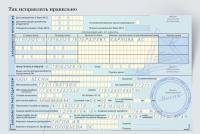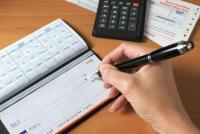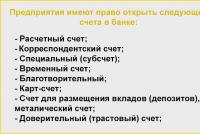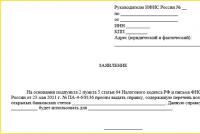Other current assets in the balance sheet - what is it
Other current assets include company funds, which do not need to be displayed in the lines of the main section of the balance sheet.
Current assets are those resources that a company uses for business purposes. during the year or production cycle. In the process of carrying out commercial activities, the costs incurred on them fit into the cost of production or are transferred to the account of cash. Information about them is recorded in the second section of the balance sheet and signed there according to the specified categories. Those amounts that do not qualify for classification are taken into account in separate line 1260 "Other current assets".
It should be noted that in accordance with paragraph 3 of clause 11 of PBU 4/99, in cases where the amount of each indicator of a particular type of asset is insignificant for financial analysis, their generalized cost indicator is indicated with accompanying explanations to them.
For detailed information on the state of other current assets, the presence of dedicated line 12605 "Deferred expenses".
This line shall reflect income from the sale of property, the right to own which has not yet been registered to the buyer. To clarify the situation, a cover note or a note in the form of an additional line with a decryption is allowed as an application.
Also, in line 12605, value added tax is taken into account, which was accrued on the amount of proceeds received, but cannot be temporarily taken into account due to the following circumstances regulated in PBU 9/99. Conditions for the recognition of revenue that is subject to simultaneous satisfaction:
- The right to receive revenue for the organization is legally secured and has a legal justification, i.e. it arose at the conclusion of the relevant contract or otherwise.
- The amount of money received can be determined.
- If there is a guarantee that from specific actions, the enterprise will receive an increase in economic benefits. For example, when the firm has received payment for an asset or its receipt is beyond doubt.
- Ownership of certain products was transferred from the organization to the buyer, customer, and also if the service was provided in full equivalent and accepted.
- Expenses that a firm has made or plans to make have a cost definition.
If at least one condition is not met, then the cash and other assets that were transferred to the company will not be taken into account in the revenue column, but will be taken into account in the balance sheet in the receivables group.
However, there are exceptions:
- Renting or providing for temporary operation of any asset owned by the firm.
- Provision as remuneration for non-permanent use of intellectual property products - registered patents. They can be for inventions, samples of industrial equipment and other types.
- Participation in the authorized capital of other enterprises.
To recognize the revenue of such organizations, it is necessary to simultaneously fulfill only the first three items from the list.
- The amount of damage caused due to damage to property or shortages, the culprit of which has not yet been identified or a decision has not been made on them as part of the costs of the production process or sales costs.
- Reimbursable amounts of VAT and excises in the near future.
- The price specified in the contract that has been charged but not yet billed.
- The amount of shares that have been purchased from other firms for resale.
Line 1260 and account
On line 1260, operations are carried out on those current assets that cannot be attributed to any item of the main section 2 in the balance sheet.
- Debit balance on account 45"Shipped goods" with the inclusion here of the amounts of VAT accrued during the shipment of products.
- Debit balance on account 46"Stages completed on works in progress".
- Debit balance with entry to account 62. Settlements with clients and customers are indicated here. The display finds the VAT charged on the goods and the prepayment or partial payment of the amount.
- Debit balance on- payment of taxes and fees. The amounts of deducted excise taxes are noted, but overpaid and not offset, but for which a decision was not made to return them to the company's budget. Also included is the excessive payment of social insurance and security contributions, which has not been credited, but has not yet been entered into the budget balance.
- Debit balance on account 76- payment of debts to debtors and creditors. In particular, the amounts of VAT, accrued advance payments and preliminary calculations of a full or partial nature.
- Debit balance on account 81- shares and shares in other organizations, bought out and owned by the enterprise for the purpose of their further sale on more favorable terms.
- Debit balance for- damages from damage to property, marriage and shortages.
Line 1260 may take into account the value of assets, the size of which is not significant for assessing the financial and economic condition of the enterprise.
Thus, when drawing up line 1260 in the balance sheet, a debit balance can be used following accounts:
- 45 – Goods that have been shipped;
- 46 – Stages that have been completed for work in progress;
- 62 – Settlement transactions with customers, buyers and clients;
- – Payment of tax charges and fees;
- 81 – Shares and equity participation in other companies owned by the enterprise;
- 94 – Losses incurred due to identified shortages, defective goods and damage to property.
Accounting
On account 1260, only assets of a current nature that are not recognized as significant can be taken into account. Information is formed on the basis following data:
- The cost of expenses for the already completed stages of construction of an unfinished object, which has independent significance and is calculated on the basis of the contract.
- Data on unreported revenue generated as a result of a construction contract that lasts more than one year, or when work start and end dates are set for different reporting years. It is calculated on the basis of the cost specified under the contract or information on the costs incurred during the specified period in the course of the work, if the possibility of their reimbursement was recognized.
- The cost of losses due to a shortage or damage to valuables, which was not included either in production costs or charged as a debt to the account of the guilty person.
- The amount of VAT that was charged on advance payments and preliminary payment and is displayed on account 62 and in a separate form.
- The total estimate of excises to be deducted.
- The cost of VAT calculated on shipped goods from revenue that cannot be taken into account in a given period and is accounted for separately on accounts 76 and 45.
- VAT and excises calculated on exports that are not confirmed and will be covered from the budget in the future.
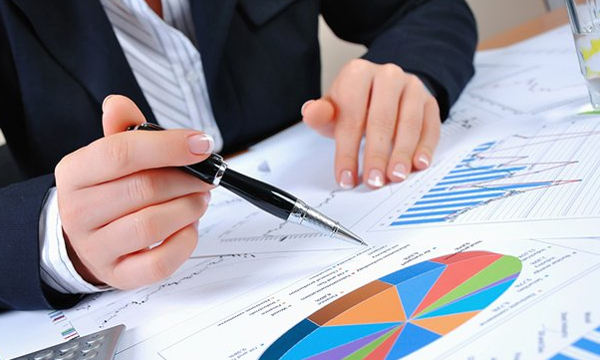
- Debit balance estimates for accounts 46 and 94.
- Balances recorded in debit on accounts of analytical type 62 - VAT, 68, 76 and 45 as of the date of the report.
Example: during the accounting, a shortage was revealed at the Snezhinka weaving enterprise in the amount of 32,000 rubles. January 21 received a preliminary payment for products in the amount of 324,000 rubles, including the accrued VAT.
January 27 products were sent in the amount of 462,000 rubles. with VAT in accordance with the concluded agreement. The cost of the finished product amounted to 212,000 rubles.
How to display in accounting:
- Write-off of the cost of shortage or missing goods - 32000. Posting: Dt. 94 K. 41.
- Prepayment received on account of the future shipment - 324000. Posting: Dt. 51 K. 62 Av.
- Charge of value added tax - 49423.43. Wiring: Dt. 76 K. 68.
- Accounting for shipped goods - 212000. Posting: Dt. 45 K. 41.
- VAT accounting - 70474.58. Wiring: Dt. 76 K. 68.
Line 1260 will display:
32000 + 49423,43 + 70474,58 = 151898,01.
In cases where, after the accounting audit, an increase in the values in line 1260 "Other working capital" was revealed, we can say that the enterprise uses the available financial resources and funds efficiently and stably.
It is recommended to conduct a specialized analysis of current assets regularly. This allows you to see and follow the growth dynamics of the company's funds.
Deferred expenses in current assets are presented below.

